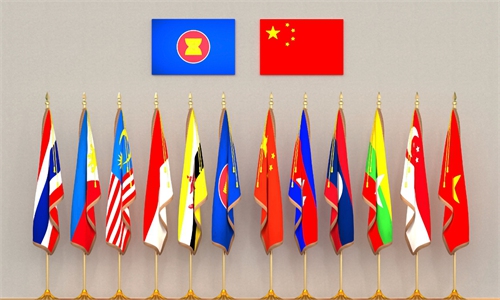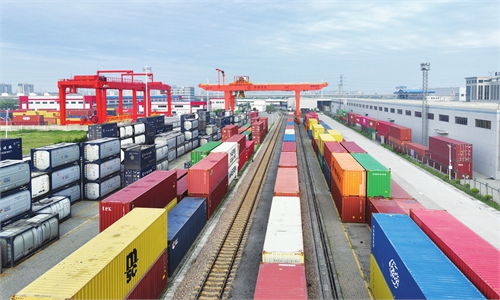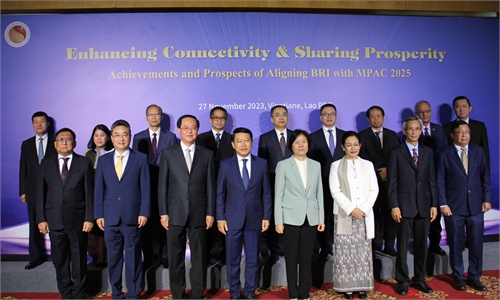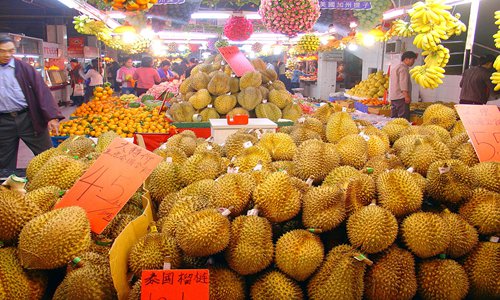
Local consumers pick up durian fruit imported from Thailand at a supermarket in Guangzhou, South China's Guangdong Province. File photo: CFP
South China's Guangxi Zhuang Autonomous Region set a record high in trade with ASEAN last year. Bilateral trade surpassed 300 billion yuan ($42.2 billion) for the first time, bolstered by the implementation of the Regional Comprehensive Economic Partnership (RCEP), which experts said elevates bilateral exchanges, especially in agriculture.
Total trade reached 339.44 billion yuan, a yearly increase of 22.8 percent. The bloc remained Guangxi's largest trading partner for the 24th consecutive year, and imports and exports with ASEAN accounted for 48.9 percent of Guangxi's total trade, Yang Baoqing, a deputy director of Nanning Customs, said at a press briefing on Monday.
Agricultural trade - a key sector for bilateral exchanges - continued to expand. In 2023, Guangxi imported 16.71 billion yuan worth of agricultural products from ASEAN countries, 43.1 percent higher than in 2022. Guangxi imported 8.79 billion yuan worth of durian fruits, mainly from Thailand and Vietnam, up 1.9 times year-on-year.
Guangxi's agricultural product exports totaled 10.71 billion yuan. Among the total, shipments of oranges stood at 1.33 billion yuan, up 20.7 percent year-on-year.
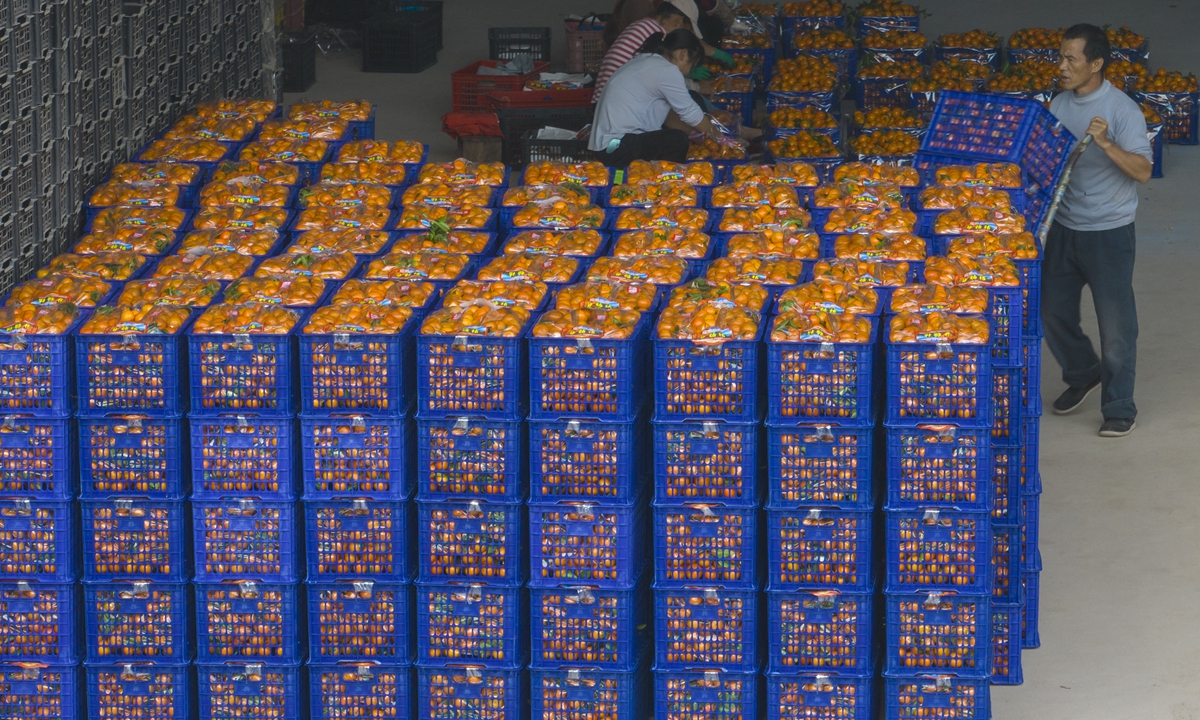
Villagers pick, sort and transport sugar oranges in Jinzhu town, Cenxi city, South China's Guangxi Zhuang Autonomous Region on December 11, 2023. Photo: VCG
Yang highlighted the vital role of the RCEP, which took effect in 2023, in diversifying markets and bolstering local trade. Guangxi's trade with other RCEP members grew 23.7 percent year-on-year to 390.51 billion yuan, accounting for 56.3 percent of Guangxi's total foreign trade.
Guangxi is a key hub, especially Pingxiang Port, for importing agricultural products from ASEAN, fruits in particular, Chen Xiangmiao, director of the World Navy Research Center at the National Institute for South China Sea Studies, told the Global Times on Tuesday.
"The RCEP has elevated and optimized bilateral exchanges in the agricultural sector," Chen said, adding that the two sides can cooperate within a broader space under the RCEP framework.
Chen said that cooperation in food processing would be further strengthened. He noted that bilateral cooperation in the agricultural sector is being upgraded under the RCEP as it is shifting from traditional exchanges in fresh fruits and products to food processing.
Observers said that Guangxi's booming trade especially in agriculture with ASEAN is just a representation of China's cooperation with the bloc, as the two sides have a strong complementarity in trade with a great market potential, especially with countries such as Thailand, Malaysia, the Philippines and Indonesia.
In the first 11 months of 2023, China remained the largest export destination for Thai agricultural products with a total value of $11.14 billion, which accounted for 26.5 percent of Thailand's agricultural exports, according to a report by the China Chamber of Commerce of Import & Export of Foodstuffs, Native Produce & Animal By-Products on Monday.
Thailand exported $4 billion worth of durian during the period, with 97.5 percent headed to the Chinese mainland.
"China's market potential with 1.4 billion population can't be replaced, while it can offer more technological support for processing fruits from ASEAN members and selling the processed products to more international markets," Chen said.
In 2023, China-ASEAN trade reached 6.41 trillion yuan, as the bloc remained China's largest trading partner for the fourth consecutive year, according to data released by Chinese customs on January 12.
Global Times
